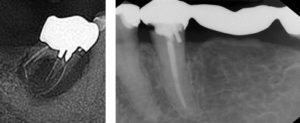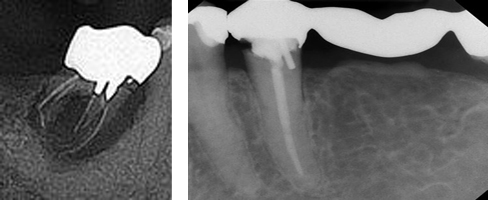ROOT CANALS CONTAIN TOXIC BACTERIUM
To Guard Your Health, Diseased & Dead Teeth Should Be Extracted
If you have been diagnosed to have a root canal, the tooth is already diseased and should be extracted. It seems like a common thing for dentists to tell you that a root canal is the only way to save the tooth, but you’re only postponing the inevitable. The tooth may be able to be saved for an unforeseen amount of time, but that tooth will eventually need to be extracted.
 Root canals have traditionally been performed to save injured, dead or dying teeth but these teeth contain high levels of bacteria which could affect other organs and tissues in the body. Using the Meridian Tooth Chart, you can see the relationships between your teeth and body organs, tissues and glands. No matter how well a root canal procedure is performed, the organisms present in dead teeth may be impossible to get rid of since they do not reside in the canal portion of the tooth. These organisms reside within tiny microscopic tubules that make up the porous dentin of the tooth and therefore are left alive after a root canal procedure.
Root canals have traditionally been performed to save injured, dead or dying teeth but these teeth contain high levels of bacteria which could affect other organs and tissues in the body. Using the Meridian Tooth Chart, you can see the relationships between your teeth and body organs, tissues and glands. No matter how well a root canal procedure is performed, the organisms present in dead teeth may be impossible to get rid of since they do not reside in the canal portion of the tooth. These organisms reside within tiny microscopic tubules that make up the porous dentin of the tooth and therefore are left alive after a root canal procedure.
Root canal filled teeth are breeding grounds for producing endotoxins, and these toxins leach into the surrounding bone and blood stream effecting other organs and tissues throughout the body. These toxins leaching into the surrounding bone are also a factor considered in causing jaw bone cavitations. Because of this, we recommend that infected or root canal filled teeth should be extracted.
If you have been diagnosed to have a root canal, the tooth is already diseased and should be extracted. It seems like a common thing for dentists to tell you that a root canal is the only way to save the tooth, but you’re only postponing the inevitable. The tooth may be able to be saved for an unforeseen amount of time, but that tooth will eventually need to be extracted.

Root canals have traditionally been performed to save injured, dead or dying teeth but these teeth contain high levels of bacteria which could affect other organs and tissues in the body. Using the Meridian Tooth Chart, you can see the relationships between your teeth and body organs, tissues and glands. No matter how well a root canal procedure is performed, the organisms present in dead teeth may be impossible to get rid of since they do not reside in the canal portion of the tooth. These organisms reside within tiny microscopic tubules that make up the porous dentin of the tooth and therefore are left alive after a root canal procedure.
Root canal filled teeth are breeding grounds for producing endotoxins, and these toxins leach into the surrounding bone and blood stream effecting other organs and tissues throughout the body. These toxins leaching into the surrounding bone are also a factor considered in causing jaw bone cavitations. Because of this, we recommend that infected or root canal filled teeth should be extracted.


Around 1910 – 1920, the toxicity of root canals was disclosed by Dr. Weston Price and Mayo’s Clinic. Dr. Price was very concerned about the pathological bacteria found in nearly all root canalled teeth at that time. He found that bacterial growth in root canals could be transferred into animals and create the same diseases the donor human had in from 80 to 100% of the animals. Heart Disease, in particular, could be transferred 100% of the time. Dr. price found that root canals had bacteria within them capable of producing many diseases and could destroy the nervous system and other body systems. His research has since been suppressed by various Dental Associations in the United States.
Using modern Dental DNA testing, over 800 root canalled teeth and cavitation samples were analyzed and the findings showed that all samples were found to harbor pathogens (some over 90 pathogens), 100% of the time.
The Toxic Element Research Foundation (TERF), using state of the art DNA testing technology, identified multiple pathological bacteria found within root canal teeth, the bone adjacent to the teeth, and even more in extraction sites where healing has not taken place. The no-healing occurs in greater than 99% of wisdom tooth extraction sites. Additionally, large defects on non-healing are often found upon surgical exploration into the bone – about the size of the original wisdom tooth. Other sites leave what are called “cavitations”.
Unfortunately a diseased tooth cannot be saved when your health is the priority. It is ultimately better if no root canal took place to guard your health, otherwise the damage may already be done.
